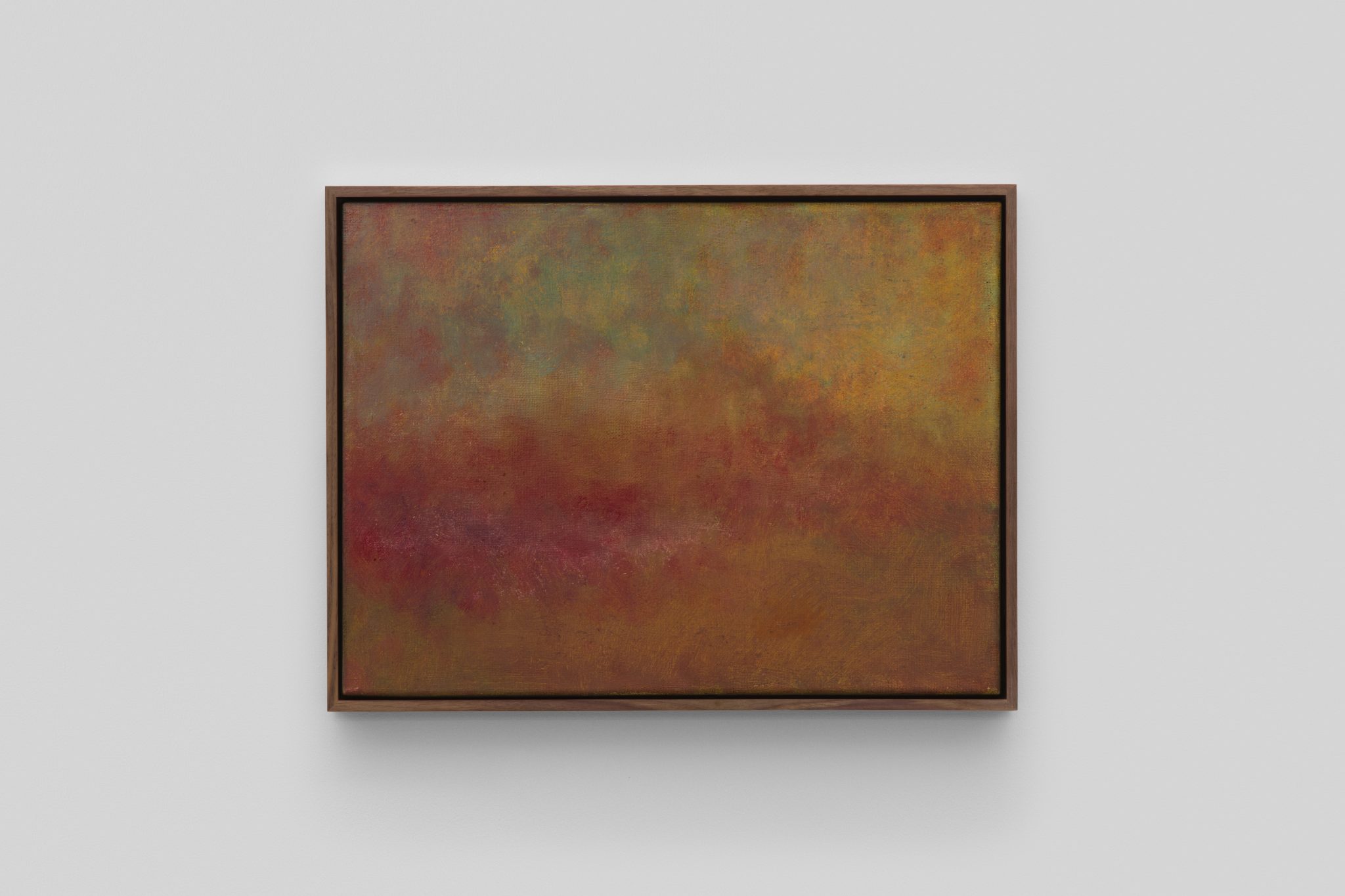The artist’s Recent Paintings at Vardaxoglou, London flirts with the outmoded and the fogeyish
While the titles Lewis Brander gives to his paintings indicate that they depict the sky looming over the cities of London and Athens, when seen from a distance these works might easily be mistaken for monochromes. Take London (2019–23), a small and heady rectangle of absinthe-green, which only reveals its motif when we get close enough to the canvas to note a muted horizon line and the way the British artist employs the subtlest of tonal modulations to suggest the play of sunlight on diffuse, barely-there clouds. If these are paintings that demand slow, careful looking, then they also take a long time to produce: according to their dates, this might be up to five years.
A gallery text states that while Brander sometimes lays down a few initial marks on his canvases en plein air, these works are mostly painted in his studio, from memory. A sky is a complex composition, and one that rearranges itself from one moment to the next. It follows that what the artist captures are not fleeting sense impressions, but their long mental afterlife: the way they grow, or decay, or become abstracted over time.

Towards the bottom edge of Korakis Hill (2022–23) his terracotta pigment appears to run out, while in Primrose Hill (2022–23) – a dusky painting of the view over the British capital from one of its highest points – the city’s every building seems to have vanished, as though we’ve been returned to prehistory, or fast-forwarded to a posthuman future. Both Periclean Athens and Victorian London could stake a claim to be the most advanced metropolises of their respective eras. Looking at these locations today, Brander sees gorgeously polluted skyscapes, beneath which everything that was once solid has now melted into air. Are these paintings, then, about civilisational decline and fall, and if so, to what degree are they marked by a nostalgia for a lost, surely irrecoverable world?
For an artist born in 1995, there’s much that is curiously retrograde in Brander’s painterly address. There are elements of J. M.W. Turner’s light-strafed romanticism and of James McNeill Whistler’s misty urban sublime, traces of Brice Marden’s fields of fine-tuned colour and of Howard Hodgkin’s heat-hazed, near-abstract landscapes. It’s also notable that Brander titled his exhibition Recent Paintings, as though he wasn’t a young Goldsmiths graduate with the contemporary artworld in his sights but some fusty Royal Academician showing at a Cork Street ‘picture seller’ circa the release of The Beatles’ first LP. In flirting with such outmoded, even deliberately fogeyish signifiers, he seems to be inviting us to think about what sets him apart from the average Sunday dauber. This is risky. Context matters, but quality matters more.
Nostalgic or not, his canvases deliver. The View Towards Piraeus (2020–23) resembles a sheet of battered and faintly bloodstained yellow-green metal. Contemplating this work, I’m reminded both of the smog that often shrouds present-day Athens and of how Homer described the Mediterranean skies not as blue, but rather bronze. At his best, Brander employs landscape as a method of drawing disparate moments – even histories – together into a single image. What he paints is not only space, but also time.
Recent Paintings at Vardaxoglou, London, 24 January – 2 March
